The feature in our March issue that considered the electrification required for a zero-carbon railway attracted a great deal of interest. This included a map showing that between 4,300 and 6,300 route kilometres of electrification was likely to be required from an analysis of the amount and type of traffic on currently unelectrified lines.
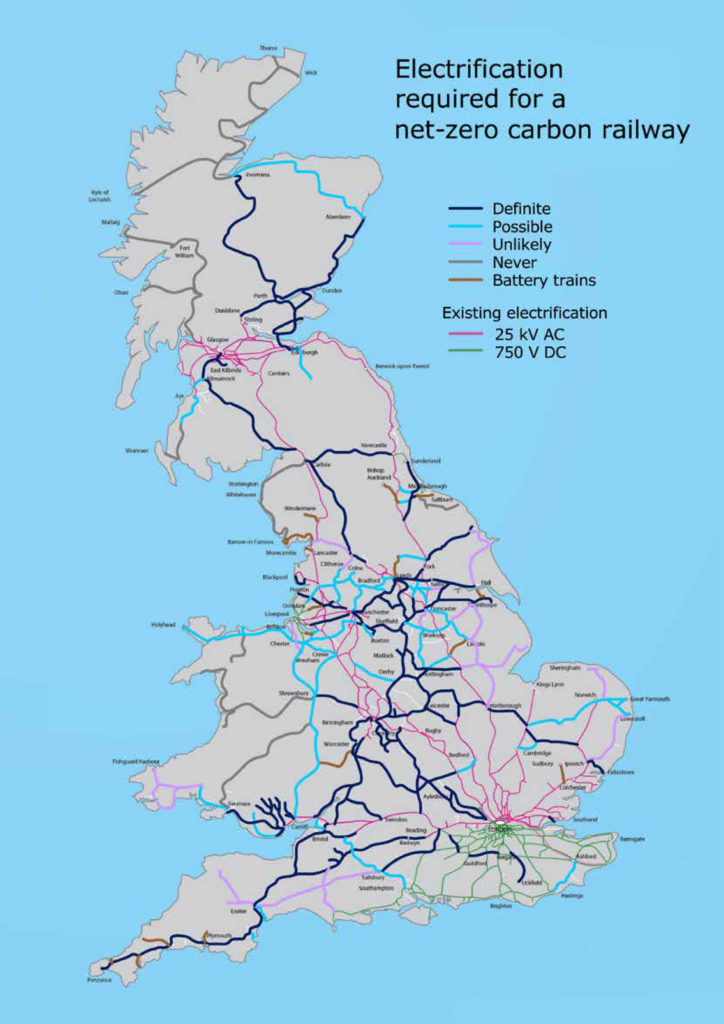
Some responded stating that particular lines on the map should be shown as definite, rather than possible, electrification. Whilst this could well be the case, this study was not intended to be a definitive, line-by-line statement of electrification requirements. Instead, it set out to show the scale of electrification required, with immediate priorities. This had to take account of the amount of electrification that a cost-effective rolling programme could deliver by the 2050 net-zero target date.
Requests for the spreadsheet used in this analysis were received from various train manufacturers and industry bodies. One of these was considering how gauging strategy could take cognisance of future electrification plans, in respect of passive provision where there will be no electrification. This is an example of the need for a strategic overview.
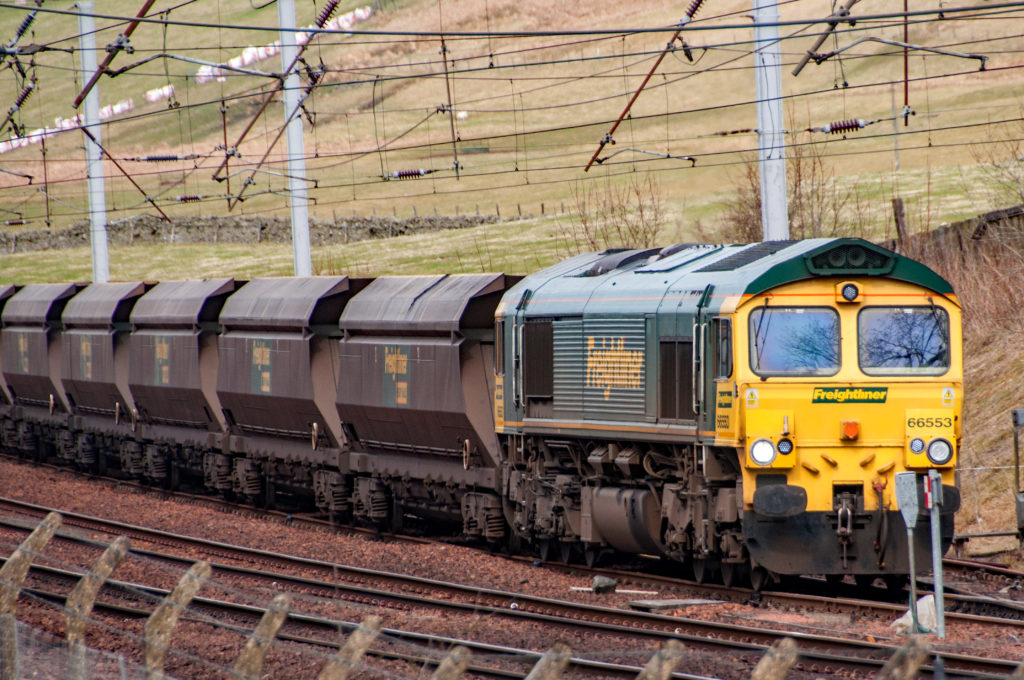
TDNS study
The spreadsheet was also shared with Network Rail’s Traction Decarbonisation Network Strategy (TDNS) team. This strategy was a recommendation of the report by the rail industry’s decarbonisation taskforce, which was set up to respond to the then Transport Minister Jo Johnson’s call in February 2018 to eliminate diesel-only trains. With the subsequent UK adoption of a net-zero carbon target, this requirement became the elimination of all diesel trains.
The TDNS is analysing all unelectrified rail corridors to determine whether they should use electric, hydrogen or battery traction by considering the limitations of battery and hydrogen traction and the cost of electrification. A programme business case will then be produced, using a whole lifecycle cost and benefit model that quantifies carbon savings to provide the basis for each element of a rolling decarbonisation programme, together with a map showing which traction technologies should be deployed.
This work will provide Network Rail’s regions with an overarching strategic document to prioritise infrastructure work and develop their infrastructure decarbonisation projects. It will also inform future rolling stock requirements for those who buy and manufacture trains. In this respect, the TDNS will consider rolling stock that needs to be renewed before the 2050 deadline and opportunities to retrofit existing diesel bi-modes with zero-carbon traction.
From a discussion with Michele Piu, a strategic planner in the TDNS team, it was clear that Rail Engineer’s electrification map was broadly in line with the TDNS’s emerging conclusions. These are that rail decarbonisation requires a major electrification programme, although electrification cannot be justified on lines with limited use. On some lines it is not yet possible to specify a definitive solution, given future unknowns such as the emerging cost of electrification, government valuation of carbon savings and emerging capabilities hydrogen and battery traction.
The TDNS report will provide an indicative decarbonisation programme and will be sent to decision makers for endorsement later this year.
Decarbonising transport
The DfT published its “Decarbonising Transport” report in March. This rightly emphasised the need for a shift from cars to public transport and for zero-emission road vehicles. However, it did not fully address the net-zero report produced by the Committee on Climate Change (CCC). For example, the DfT report did not mention the need to double electricity generating capacity for large scale use of electric road vehicles.
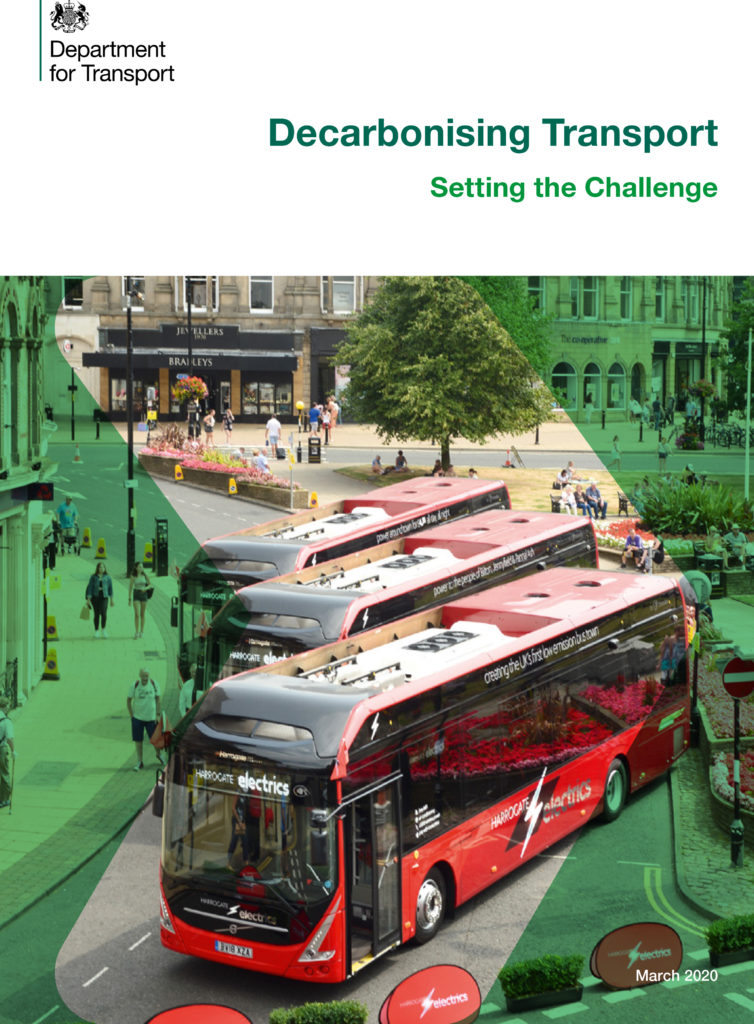
The CCC report considers that, by 2050, HGVs would be hydrogen powered, as batteries are unlikely to be suitable for heavy road vehicles. To achieve net zero, the CCC report considers that the annual demand for hydrogen for transport requires investment in hydrogen infrastructure to service an annual demand of about 25 TWh (HGVs – 22 TWh, Buses – 3 TWh, Trains – 0.3 TWh).
However, the DfT report also does not mention hydrogen powered HGVs or buses. This omission was underscored by a recent letter to Secretary of State for Transport Grant Shapps from the All-Party Parliamentary Group on Hydrogen, which complained that, whilst his department is funding a £50 million trial of electric buses, there is no equivalent funding for hydrogen bus trials.
In respect of aviation, the DfT’s report considers efficiency improvements, sustainable fuels and market-based measures. It does not mention the CCC report’s conclusion that there are unlikely to be zero-carbon planes by 2050 (Airbus and Rolls-Royce have recently cancelled their E-Fan X demonstrator programme, just a year before the experimental hybrid-electric engine airliner was supposed to fly) or its recommendation of a 30 per cent reduction in plane travel. Instead, DfT notes that airport expansion is a core part of boosting our global connectivity.
The section on passenger rail notes that the railway is becoming less carbon-intensive as new trains come into service and the railway uses greener electricity. It concludes that “we recognise that electrifying more of the railway is likely to be necessary to deliver decarbonisation”.
The use of the term “likely” is curious, as statistics demonstrate how existing electrification is progressively reducing carbon emissions, as with the greening of the grid. As shown in the table, over the past five years, the average electric rail passenger vehicle has reduced its emissions by 41 per cent and, per vehicle, diesel passenger trains now produce almost four times more CO2 emissions than electric trains.
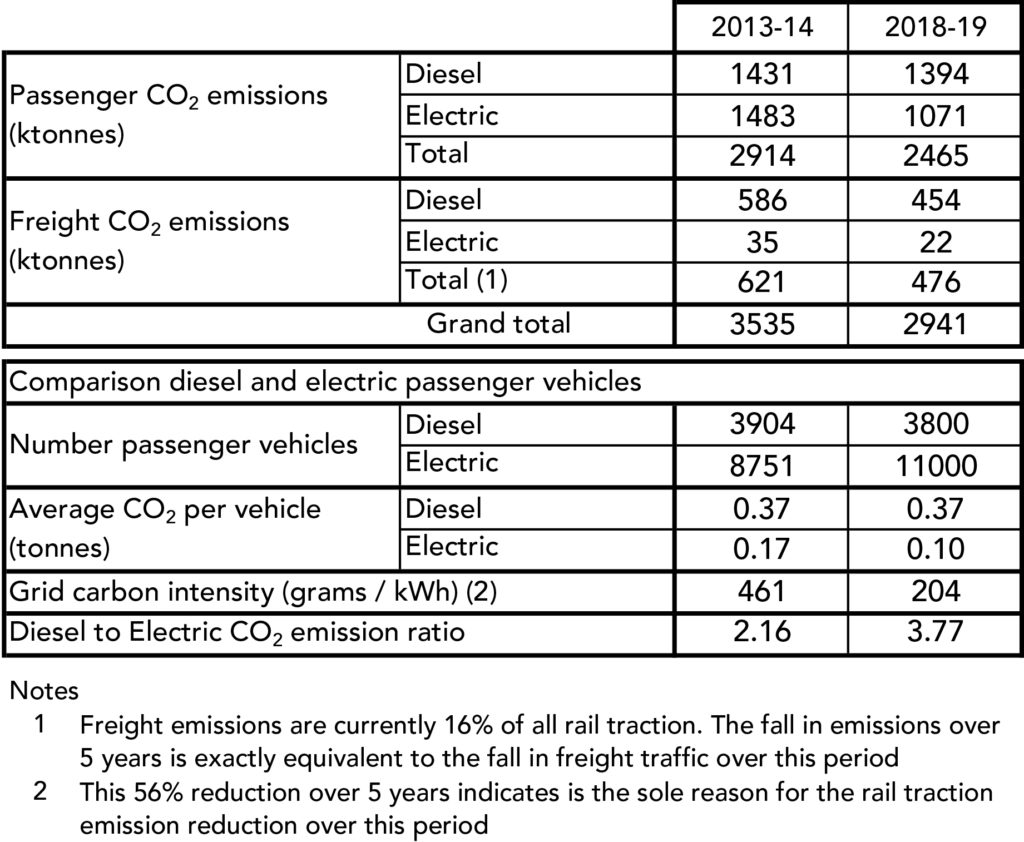
The DfT report does, however, recognise that “the main way to achieve rail freight decarbonisation is to stop using diesel traction through direct government intervention to roll out further electrification”. It further states that the TDNS will inform the deployment of electrification and use of battery and hydrogen technologies over the next 30 years, and also notes the requirement “to make rail an even more attractive option so that more people choose this greener mode of travel”.
Clean air
Poor air quality, like CO2 emissions, is a subject of increasing public concern. Public Health England considers it to be the “biggest environmental threat to health in the UK, with between 28,000 and 36,000 deaths a year attributed to long-term exposure”.
Five per cent of the population are estimated to have respiratory problems. Those recovering from Coronavirus will also suffer lung damage.
While air quality and greenhouse gases are two different problems, they have the same solution – the replacement of diesel engines by zero-carbon traction. However, unlike greenhouse gases, the risk from air pollution is at specific locations. For this reason, improving air quality at problematic stations is a factor that the TDNS will consider when prioritising electrification schemes.
Various UK cities are establishing clean air zones (CAZ), where road vehicles not meeting the required emission standards are banned or pay a fine. Birmingham’s CAZ, the area within the inner ring road, came into force in January and imposes an £8 per day charge for diesel cars that fail to meet Euro 6 emission standards. Birmingham New Street station, where air quality is a particular problem, lies within this zone.
In 2018, a University of Birmingham study found, at platform level below the concourse, a consistent exceedance of the DEFRA one-hour nitrogen dioxide limit, with, typically, one hundred trains a day idling for more than 15 minutes.
Since then, £1 million has been spent to upgrade the station’s 98 extractor fans and install 97 new sensors to monitor exhaust fumes. In addition, the action plan to reduce train idling includes installing auto-shutdown software on class 220/221 units and health screening all platform despatch staff. This plan is supported by analysis of the large amount of real-time data from these sensors to identify hot spots and monitor the emissions of each train.
Whilst this will, no doubt, improve the situation, the real solution is the decarbonisation of trains using the station.
Hydrogen
There are no harmful emissions from hydrogen trains as fuel cells mix hydrogen fuel with oxygen in the air to produce electricity and water vapour, the train’s only emission.
Except for short-distance services, hydrogen trains are the only non-zero carbon option for non-electrified lines. Yet, for the same energy storage, hydrogen at 350bar requires fuel tanks eight times the size of a diesel tank. Hydrogen trains are also inefficient, due both to the losses from converting electricity to hydrogen and back again and to the energy needed to compress hydrogen for storage. With a hydrogen train, one kilowatt of power at the wheel requires, typically, 3.4 kilowatts of grid electricity. By comparison, an electric train requires about 1.2 kilowatts. Whilst hydrogen can be produced using surplus overnight wind power, this inefficiency is a significant issue if hydrogen were to be used on a large scale.
Our feature in the March issue concluded that, for a net-zero railway, hydrogen trains will carry between five and 18 per cent of the traffic. Thus, assuming that in 2050 there will be 22,000 passenger vehicles in service, between 1,000 and 4,000 hydrogen vehicles would be required by then.
Despite the lack of UK hydrogen passenger trains, hydrogen traction can be regarded as a mature traction technology. Alstom’s hydrogen-powered two-car Coradia iLint entered service in northern Germany in September 2018. In addition to these two pre-series trains, a further 39 units have been ordered for use in Germany.
In March 2020, a hydrogen-fuelled iLint successfully completed ten days of testing in the Netherlands.
Siemens is also developing a hydrogen train based on its Mireo platform, which is expected to be ready next year.
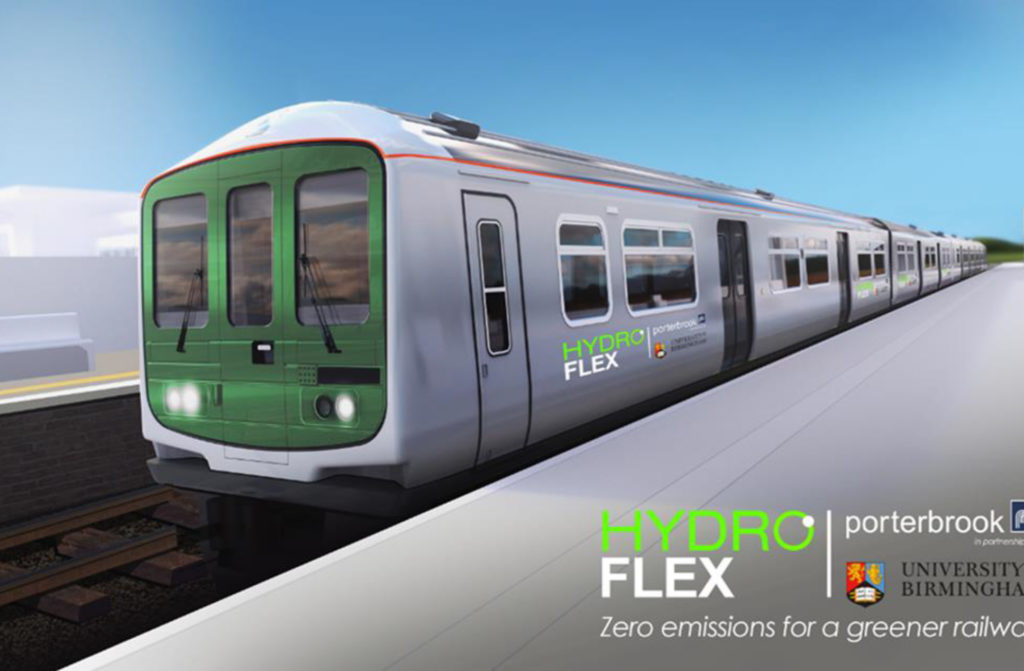
Britain’s first mainline hydrogen train is Hydroflex, a joint development by Porterbrook and the University of Birmingham. This was produced in just nine months by housing the fuel cell, battery, hydrogen storage tanks and other equipment inside the motor vehicle of a converted Class 319 EMU. Hydroflex is purely a demonstrator vehicle, from which many useful lessons will be learnt.
Alstom unveiled its design for a UK hydrogen train in January last year. This ‘Breeze’ concept is a Class 321 conversion that packs Alstom’s hydrogen technology within the UK loading gauge. Unlike the iLint, which has roof-mounted hydrogen tanks, the Breeze stores hydrogen inside the train with a consequent reduction in passenger space. With a new train, rather than a conversion, it may be possible to design hydrogen storage that does not encroach the passenger area. However, a bespoke UK hydrogen train would require a significant production run.
Whilst hydrogen traction is being actively pursued in the UK, it may be some years before passengers travel on hydrogen trains. Obtaining approval to operate a train with systems for which there are no standards will be challenging. Another issue is a reliable supply of hydrogen.
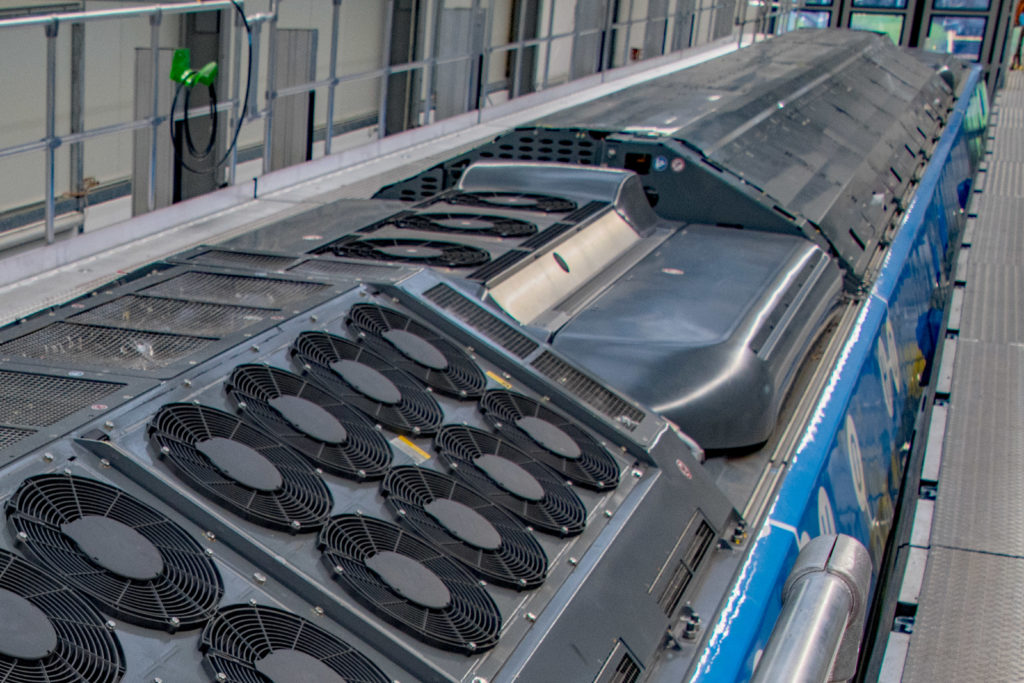
The Tees Valley Combined Authority is developing plans for hydrogen trains, as the area produces a large amount of the UK’s hydrogen. Other reports indicate that the deployment of hydrogen trains require the development of hydrogen infrastructure, yet there is no requirement for hydrogen trains to operate close to a hydrogen plant or be supplied from hydrogen pipelines.
Currently, almost all hydrogen is produced in large chemical plants by reforming methane gas. This produces greenhouse gas emissions and is insufficiently pure for use in fuel cells. Alternatively, it can be produced by electrolysis, which produces a purer hydrogen and is zero-carbon if powered by renewable energy.
In Aberdeen, the electrolysis plant that fuelled the city’s fleet of ten hydrogen buses had to produce around 150kg of hydrogen per day. It consisted of three electrolysers (each the size of a 40ft container), two compressors, two dispensers, storage tanks, associated control systems and cooling plant. It required a 1MW electricity supply.
With the iLint’s hydrogen tanks holding 190kg of hydrogen, a train depot servicing, say, a fleet of ten trains would need an electrolyser plant around fifteen times of that in Aberdeen bus plant. Such a facility could cost around £20 million.
It is likely that, as in Germany, the train manufacturer would provide this plant to give train operators a serviced and fuelled train. Hence, the cost of the electrolyser plant increases the up-front cost of the trains and requires an order for a small fleet to justify this investment. Thus, like electrification, hydrogen trains require capital investment before fleet operation is possible.
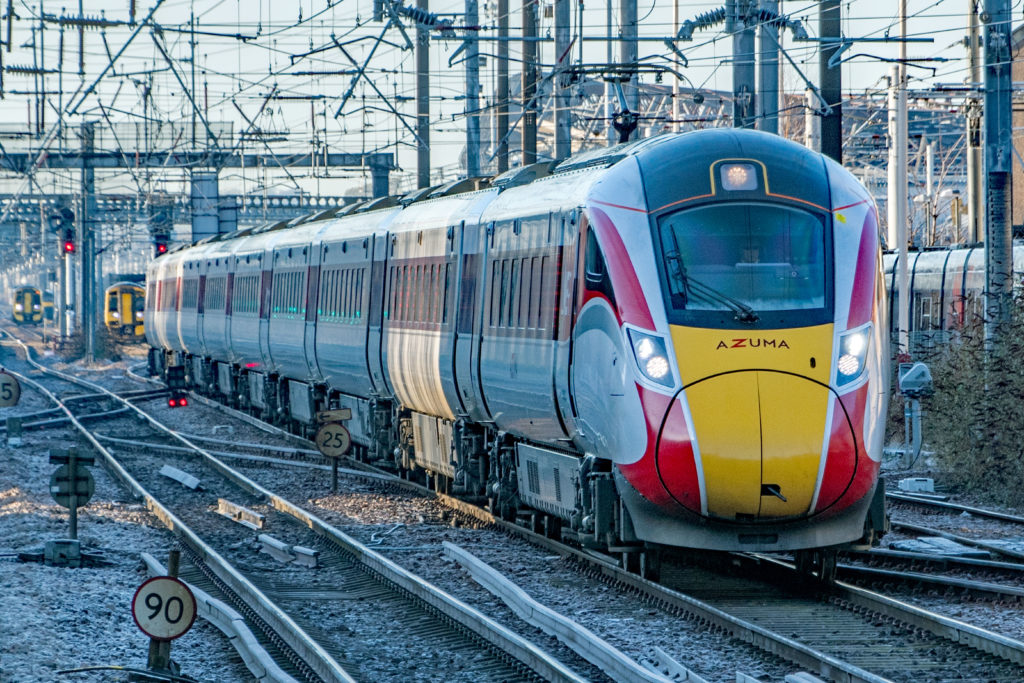
The transition
Much has been written on how net-zero rail traction can be achieved by 2050. However, for most of the network, this is a relatively straightforward problem, as the underlying science defines where it is appropriate to have electrification, hydrogen or battery traction.
However, transitional arrangements are a more complex issue. The big lesson from recent electrification schemes is the need for a cost-effective rolling programme. Hence it will be many years before some lines requiring electrification get their wires. TDNS must therefore prioritise electrification and determine the best use of transitional low-carbon technologies. This is a complex task given the size of the unelectrified network and number of options.
The good news is that modern traction technology facilitates a rolling programme of electrification. Battery traction can provide zero-carbon running over short distances in advance of electrification. For example, LNER is considering replacing diesel power packs with batteries on Azuma trains for short distances off the wire, such as to Lincoln and Harrogate.
An option being considered in Scotland is electrifying the six-mile Levenmouth branch as it is reopened. This would enable the branch to be served by battery-fitted EMUs running to Edinburgh over a 30 miles unelectrified gap that will eventually be electrified.
Bi-mode trains support a rolling programme as the amount of diesel running can be progressively reduced as a route is electrified. Replacing the diesel-powered HST fleet with bi-modes resulted in significant carbon savings as it eliminated diesel running under the wires. For example, a Class 800/1 between London and Inverness has about a third of the CO2 emissions of the HSTs they replaced. Yet their diesel power packs, which are generally unused for most of the journey, account for eight per cent of the weight of the train and thus result in additional energy consumption when running on fully electrified routes. Moreover, as the diesel performance of bi-mode trains does not come close to their electric power, it was wrong for Chris Grayling to claim that these trains make electrification unnecessary.
Another useful transitional-only technology is dual-fuelled trains, a concept that Grand Central was about to trial before the COVID 19 emergency. The company has a fleet of ten five-car Class 180 ‘Adelante’ DMUs, which are now the only diesel trains that operate into King’s Cross.
This trial is on a vehicle on one of the Class 180 units. This has been fitted with dual-fuel technology which optimises combustion when liquified natural gas (LNG) is mixed with diesel. The LNG is stored at minus 190°C in a cryogenic tank. The dual-fuel engine performs exactly as if it were running as a diesel-only engine and has a reduced diesel consumption and engine noise. This is a proven technology used on over 300 lorries in the UK that have run over 50 million kilometres.
This system reduces particulate emissions by over 50 per cent and CO2 by between 25 and 40 per cent. The pay-back period from the reduced fuel costs is less than five years. This trial, which was part-funded by RSSB, will resume when COVID 19 restrictions permit.
Dual-fuel technology thus solves half the emissions problem. It is also relatively straightforward to refit. Given the time needed to electrify the network and introduce hydrogen trains, it might be expected that other diesel train fleets, with many years life remaining, will be retrofitted with this technology.
The first law
The first law of thermodynamics states that energy cannot be created but can only be converted from one form to another. Hence most forms of transport must store chemical or electrical energy and carry a power unit to convert this to kinetic energy. A vehicle’s power and range is limited by the energy it can store.
The challenge for decarbonised transport is that nothing comes close to the amount of energy stored in liquid fossil fuels. For planes, it is difficult to imagine any alternative. For trains and road vehicles, the only practical zero-carbon energy storage is batteries and hydrogen (at 350bar) with energy densities of typically seven and 14 percent that of diesel fuel. Thus, they can only be used for relatively low powered applications and, in the case of batteries, for short distances.
Electric trains, however, can get around the limitations of the first law of thermodynamics as they can receive a large amount of energy whilst in motion. Thus, their power is not limited by the need to store energy on-board or the maximum power of an on-board power plant.
In February 2018, when the then Transport Minister Jo Johnson challenged the industry to report back by the autumn how it could eliminate diesel-only trains to decarbonise the railway, he suggested that battery and hydrogen trains were a “prize on the horizon”.
It then took 18 months to produce the final 66-page rail industry decarbonisation report. Its foreward called for a judicious mix of electric, hydrogen and battery traction but did not refer to the large-scale electrification programme of 4,250 route kilometres mentioned on page 34. The report recommended that the TDNS should specify what this judicious mix should be.
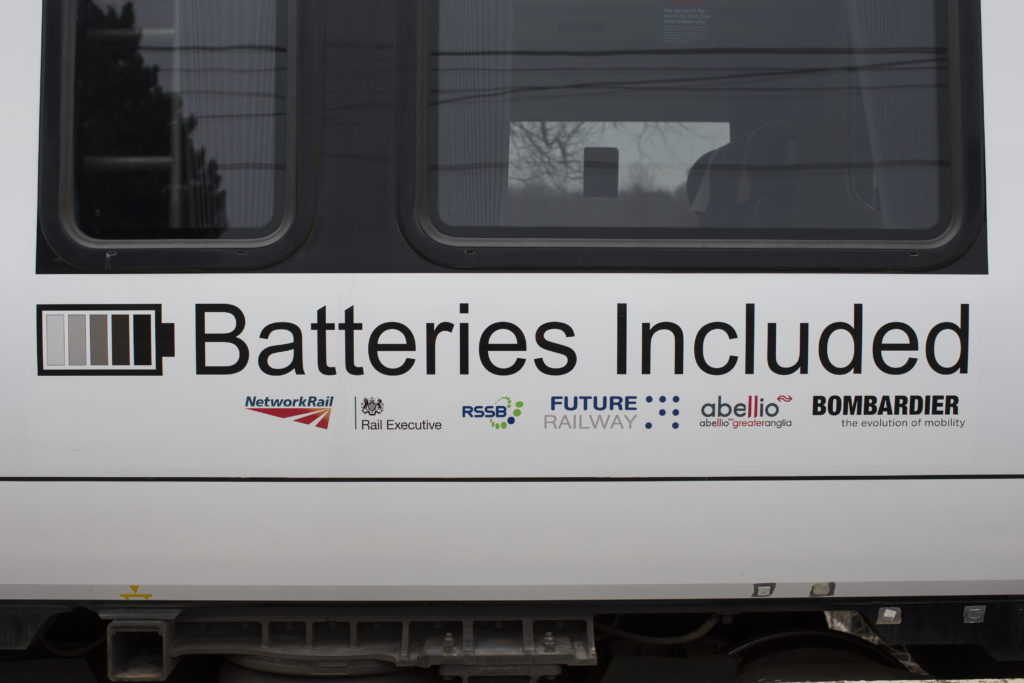
It seems that the TDNS will show the need for a large-scale electrification programme once it is finalised. Thus, it will have taken around 30 months for the industry to submit a report to government that demonstrates the need for a large-scale electrification programme.
There is certainly a need for the TDNS’s detailed analysis, showing how the transition to a zero-carbon railway is best achieved. Yet it should only have required a few weeks to produce a report to show that net-zero rail traction is only possible with a large-scale electrification programme, as this is the only possible conclusion if the science is followed.

